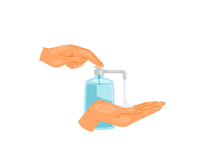Halothane
Halothane is a general anesthetic used to induce and maintain unconsciousness during surgical procedures. It is administered by inhalation and works by depressing the central nervous system, resulting in loss of consciousness and sensation. Halothane has a rapid onset and smooth recovery profile, making it useful for short and medium-duration surgeries. Although its use has declined in favor of newer agents, it remains valuable in some clinical settings, especially in developing countries or specific veterinary practices.
Uses of Halothane
- Induction of general anesthesia
- Maintenance of anesthesia during surgeries
- Short and medium-duration surgical procedures
How Halothane works
Halothane works by increasing the activity of GABA receptors in the brain, which suppresses neural activity and induces a deep unconscious state. This ensures the patient does not feel pain or awareness during surgery.
Benefits of Halothane
- Rapid onset of anesthesia
- Easy to administer through inhalation
- Provides smooth and controlled anesthesia
- Suitable for various types of surgical procedures
How to take Halothane
Halothane is administered via inhalation using a vaporizer by trained anesthesiologists in a hospital or clinical setting. Dosage and duration are carefully controlled based on the patient’s age, weight, and medical condition.
Type of Dosage Available
- Inhalation liquid for use with vaporizer
Side effects of Halothane
- Drowsiness and dizziness post-surgery
- Nausea or vomiting
- Low blood pressure
- Respiratory depression
- Halothane hepatitis (rare but serious)
- Irregular heartbeat
Safety advice
- Use only in a controlled, clinical setting
- Avoid repeated use due to liver toxicity risk
- Not recommended for patients with liver disease
- Inform your doctor about any allergies or past anesthetic reactions
- Monitor liver function if repeated use is necessary
Frequently Asked Questions (FAQs)
Q. What is Halothane used for?
A. Halothane is used to induce and maintain general anesthesia during surgical procedures, ensuring the patient is unconscious and pain-free.
Q. Is Halothane still used today?
A. Its use has declined in many countries due to the availability of newer anesthetics, but it is still used in certain regions and veterinary practices.
Q. Can Halothane cause liver damage?
A. Yes, repeated use of Halothane may cause liver toxicity, known as halothane hepatitis, especially in adults.
Q. Is Halothane safe for children?
A. Yes, it can be used in children under medical supervision for anesthesia, but newer agents are often preferred.
Q. How is Halothane administered?
A. It is given through inhalation using a vaporizer by trained medical professionals during surgery.
Download India's most affordable pharmacy app
- Compare with medicine prices
- Save upto 90% on your medicine bills

Temperature Controlled storage and delivery

Regular Sanitization

Disinfected Packaging









 Added!
Added!